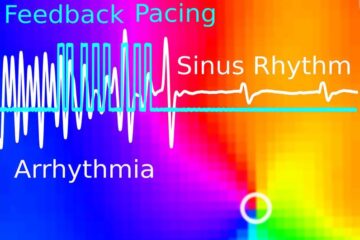‘Iron in a jacket’ helps combat anaemia in Africa

In developing countries, half of all young children suffer from anaemia, often as a result of iron-deficiency. The cause is a one-sided diet based mainly on grains. These contain phytates, substances which bind the nutrient iron from plant sources as insoluble salts. As the iron-binding phytates are not broken down in the gastrointestinal tract, the body absorbs only 5% of all the iron in plant food. The rest is excreted by the body.
Iron-deficiency can be combated relatively inexpensively by adding iron to foodstuffs. Maize and wheat are ideal for this; large population groups consume these types of flours in large quantities throughout the year. International efforts (including those of the World Health Organization and Unicef) to reinforce flour with iron are beginning to bear fruit. In 1990 only the United States and Canada reinforced their flour with iron; now 49 countries are doing the same, including Nigeria and South Africa, countries of influence in Africa.
In most countries fortification is by adding almost pure iron powder. This is prepared by treating iron oxides with hydrogen or carbon monoxide at high temperatures, or by a process in which iron is produced electrolytically from iron sulphate. The product is then ground into a very fine powder.
The researchers from Wageningen University and from Unilever suspected, however, that this iron powder would not be effective because it also binds with the phytates. So they used iron that Akzo Nobel had chemically ‘wrapped’ in an organic ‘jacket’ made of the compound EDTA. The iron-EDTA (chemical formula NaFeEDTA.3H2O) protects the iron, so that it is not able to bind with the phytates. The iron 'in a jacket' which is consumed with the food remains bound in the acid conditions in the stomach. It becomes available for absorption by the intestinal cells in less acid conditions, like that of the small intestine.
The researchers put this to the test by comparing electrolytically produced iron with iron in iron-EDTA in a so-called randomised placebo-controlled trial among 516 Kenyan schoolchildren. In this experiment, different groups of children were given porridge made from whole maize flour every day for a period of five months. Electrolytic iron was added to the flour for the first group in amounts according to the requirements of the South African government (56 mg/kg). A second group was given porridge made from flour with an equal amount of ‘jacketed’ iron (iron-EDTA). No iron was added to the flour of the third group of children.
At the end of the experiment, it appeared that fortification with iron-EDTA had reduced the occurrence of iron-deficiency anaemia by 89%, while the electrolytic iron had no effect at all on the prevention of anaemia. As expected, it appeared that the children with an iron deficiency, in particular, gained from the intervention; in contrast, the iron-EDTA had no effect on the children who already had sufficient iron reserves at the beginning of the experiment. The iron intervention did not lead to iron overload because the body regulates the absorption of iron in accordance with its requirements.
The researchers have come to the conclusion that iron-EDTA gives an improved iron status and that this in case of fortification of flours with high phytate contents, as is common in Africa and developing countries elsewhere, is to be preferred to electrolytic iron. It is expected that these findings will lead to amendments to national directives and legislation concerning food fortification in developing countries.
Media Contact
More Information:
http://www.wur.nlAll latest news from the category: Agricultural and Forestry Science
Newest articles

Wildfire danger to increase due to climate change
WSL Institute for Snow and Avalanche Research (SLF) researchers expect an elevated wildfire danger in the Alpine Foreland from 2040 onwards due to changing meteorological conditions. The danger currently remains…

Advanced Brain Science Without Coding Expertise
Researchers at Helmholtz Munich and the LMU University Hospital Munich introduce DELiVR, offering a new AI-based approach to the complex task of brain cell mapping. The deep learning tool democratizes…

Gentle defibrillation for the heart
Using light pulses as a model for electrical defibrillation, Göttingen scientists developed a method to assess and modulate the heart function. The research team from the Max Planck Institute for…





















